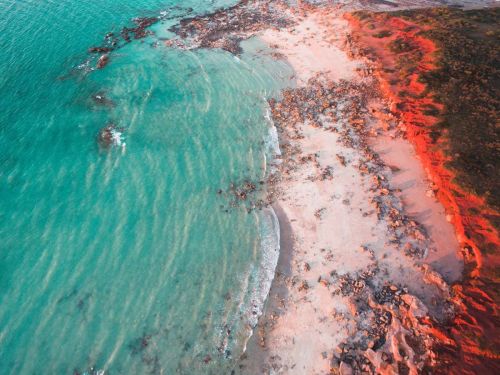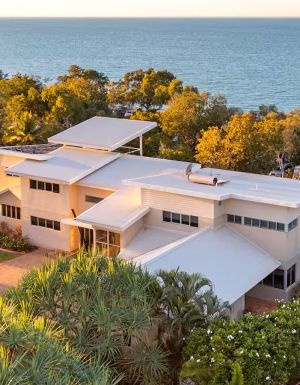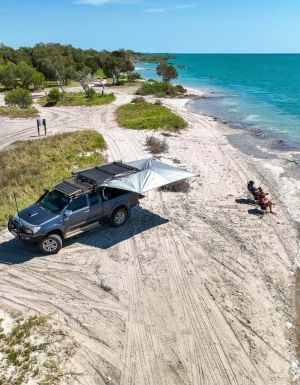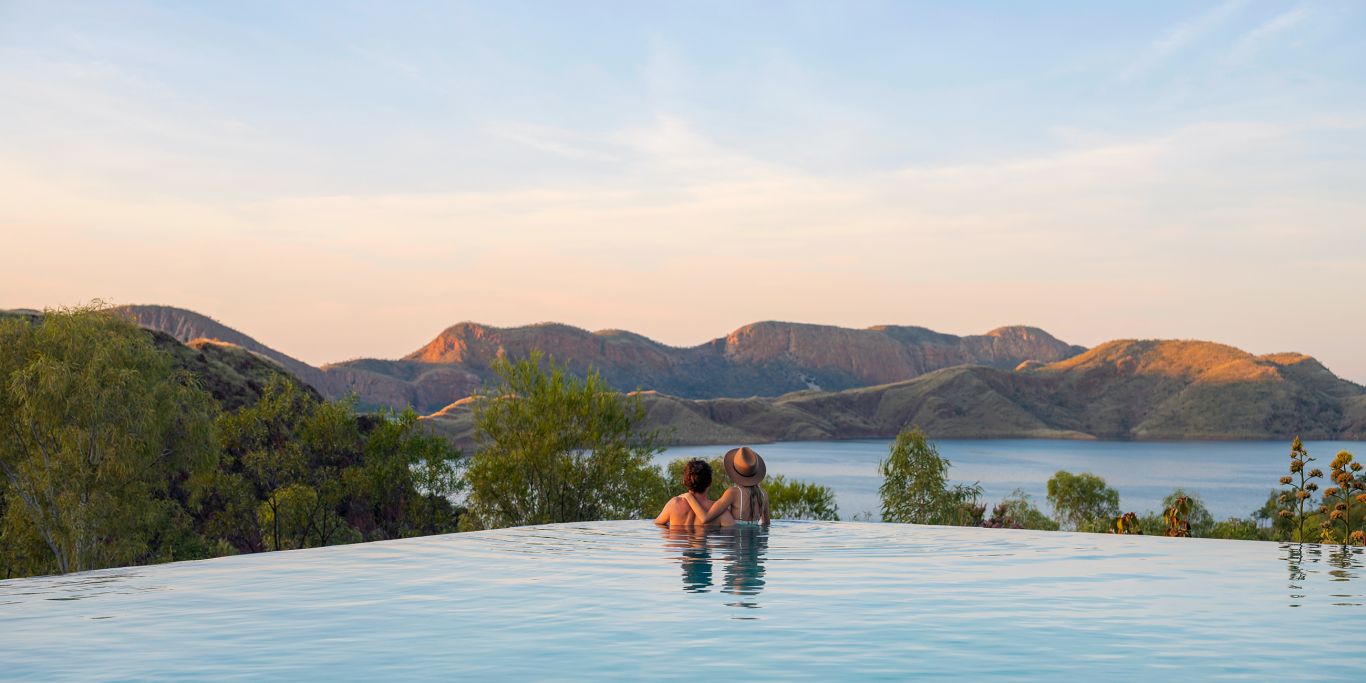Just what is it about this remote Kimberley town that gets under the skin and stays there? Lara Picone explores the unique appeal that landed Broome at the top of your list of Top 50 Aussie Towns.
Find the complete list of the Top 50 Aussie Towns here.
What makes Broome so unique?
There is something indefinable about Broome. Fringed by an ancient and unrelenting desert, this town in Yawuru Country is an ocean-side oasis that exhibits a certain flimsiness.
It’s as if any attempt to hold her would yield instant dissolution, leaving nothing but a few cagey crabs burrowing into the silty mangrove sand.
Certainly, Broome is a mirage to travellers emerging from the surrounding Kimberley, besmirched with pindan and blinking dry eyes at the sight of this border town. She quenches desert thirsts with tall glasses of beer and elevates spirits through jovial retellings of what lies beyond her frontier skirt.

In the heat of the day, her bewitchingly clear waters twinkle as artificially as a cruise ship pool. Come nightfall, her weary skies, silhouetted by unflappable ungulates, diffuse the heat in a spectrum of sherbet hues.
She is a breath-snatcher, for sure. From Cable Beach to Gantheaume Point and Roebuck Bay, her beauty is undeniable. But it’s the layers beneath that enslaves hearts, so much so that years after visiting, you may be busying yourself with some positively mundane task when Broome’s mirage will appear before you, imploring you to return to her monsoonal embrace.

The allure of Broome’s pearls
At its colonial beginning, before it was officially established in 1883, Broome was a scrappy little outpost clinging, precociously, to Roebuck Bay. They came for pearls. And like any township built around the commodity of a luxury good, the population exploded with a specific type of entrepreneur operating within all the crannies of arguable legitimacy.
A seemingly insatiable demand for pearls and those who could be sent to the bottom of the ocean to liberate them ensured that Broome became a wild outpost of elastic morality.
Initially, the horrific practice of blackbirding (kidnapping Indigenous peoples as slaves) was deployed with few qualms; later, cheap labour started arriving from China, Malaysia, Japan and even Arabic countries, along with the hasty assembly of slums, opium dens, hawker stalls and prostitutes.

Eventually things evened out, but not before an astonishingly high number of souls were abandoned in the depths for the sake of a string of pearls. Ironic, really, that a thing of such shimmering purity authored so much death and devastation.
Still, the legacy, while in parts deeply distressing, also had its upsides. It’s these upsides that contribute to Broome’s magnetism today, from her joyfully embraced multiculturalism to her world’s-edge allure. A little of that early pugnacity and plenty of resilience remains, laced with a feeling of jubilance.
It is a town that celebrates its multiculturalism
Most jubilant of all is Broome’s best-loved celebration, the annual Shinju Matsuri Festival of the Pearl , which is a celebration of the town’s cultural diversity. But, on any given day, you need only stroll Chinatown to comprehend the deeply appreciated contribution from diverse nations that has whittled the town into what it is today.

Of course, the Yawuru people were here countless generations before Rubibi (the township of Broome) was unofficially settled. These Traditional Custodians were, and remain, the caretakers of the region, stretching as far inland as the Edgar Ranges on the hem of the Great Sandy Desert.
In a staggering measurement of how recent even their ancient lore is, their stories fall in step behind those who came millennia before them. Cretaceous and colossal, the imprint of dinosaur footprints tread 80 kilometres from Roebuck Bay to the Dampier Peninsula and are part of the area’s First Nations Peoples’ song cycle, which tells the story of a Dreamtime Creator.

It’s no hurdle to conceive how this story of an omnipotent architect called ‘Marala’ or ‘Emu Man’ manifested from the prehistoric impression left by ungainly, carnivorous theropods and four-legged, vegan sauropods. But it’s staggering to comprehend how these stomps in the sand managed to endure for 120 million years.
The footprints mark the founding layer in the ongoing lamination of Broome and are as baked into what makes this town incomparable as they are into the earth itself.
There are countless layers, though. Beyond her human history and a pummelling by bygone beasts, Broome’s addictive otherness also stems from her proximity to the Kimberley’s dazzling high-definition beauty.
It has nearby gems to explore
There are those who come for Broome alone, lounging in resorts and enjoying sundowners on Cable Beach as they watch fellow tourists lurch rhythmically on a string of camels.

All of which is entirely wonderful. But there are others who tread water in Broome, pausing to embark on adventures outside of her cushioned lap. From the town, four-wheel-drives relentlessly depart like a procession of ants, pushing into the desert and along the majestic coast, up to desperately gobsmacking Cape Leveque and along the comprehensively beaten Gibb River Road.
Broome is a town unlike others. Spirits of the past dive in her waters, trample her coastline, forage her mangroves, and populate her streets. But Broome is not haunted by the past. Rather, she relishes its lessons, polishes the good bits and shares it with the future. An outpost at heart, whether you pass through or linger, this place will unearth your inner explorer.
Explore more of Broome in our travel guide or find out which other towns made it into your Top 50.














